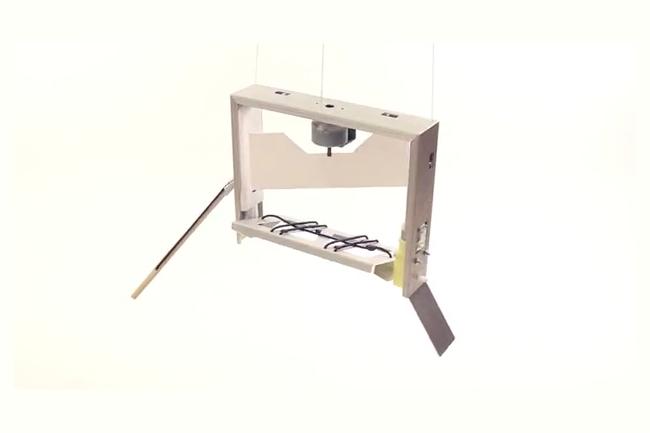
With all the news lately about quadcopters, consider Sparrowscope to be a lo-fi version of one. Copters are popular camera rigs for shooting footage from overhead, but can be expensive to buy and hard to use. The Sparrowscope lets you achieve aerial photography by using a kite and a smartphone. That’s right, a kite, that toy you used to be play with as a kid.
The Sparrowscope device is created by Ori Barbut, who has been doing research on robotics, electronics, and software design since graduating from the University of Toronto with a Master’s in Engineering. Since 2012, Barbut has been working to develop an easy way to take aerial photos after a discussion with friends during a picnic, and the idea of using a kite came to mind. Consumed with the idea, Barbut went to work on creating what would become the Sparrowscope.

While the concept is simple, the Sparrowscope is anything but. Here’s how the whole thing works. First, you secure an iPhone, iPod Touch, or Android phone to the three elastic harness cords. The Sparrowscope is then connected to the smart device through the headphone jack. Audio signals from the Sparrowscope app tell the contraption (which has a built-in circuit board and recharges via Micro USB) how quickly to tilt up or down the phone tray, and how fast to turn the paddlewheel for panning left or right. The app can be set to Solo mode, where the smart device automatically takes photos, or can be paired with another iPhone, iPod Touch, iPad, or Android device as ground control (the app allows an iPhone to “talk” to an Android device), giving you a live-view image and controls by swiping at the screen. The Sparrowscope automatically shuts down to save power. Barbut has been testing the device for 16 months, and has never damaged the smart device attached.
After the Sparrowscope is set up, it’s attached to the kite, and here you’ll need to utilize the kite-flying skills you’ve developed to send the whole thing into the air. Three kite options are available, from a simple base model to a more advanced one. All kites come with a 300-foot braided line. Naturally, you should fly a kite where it’s safe, free from wires and obstacles.

Barbut has successfully tested the device around Toronto. He acknowledges that the concept, known as kite aerial photography, isn’t new, but says the Sparrowscope “will be the most advanced one to ever be commercially produced…and leverages the technology in your smartphone or iPod Touch to make kite aerial photography significantly easier and less expensive than ever before.” The project is currently seeking funding on Kickstarter (which launched at the tail-end of the 125th anniversary of the first recorded kite aerial photographs by Arthur Batut, who was interested in using it for military reconnaissance), and if it’s successfully funded, it’ll ship to early backers in May 2014. A pledge of $190 will get you a Sparrowscope, more if you want to add a kite to it.
Before you roll your eyes at the project, realize that flying a kite was how Benjamin Franklin did his research on electricity. If it worked for him, it should work for aerial photography too.


